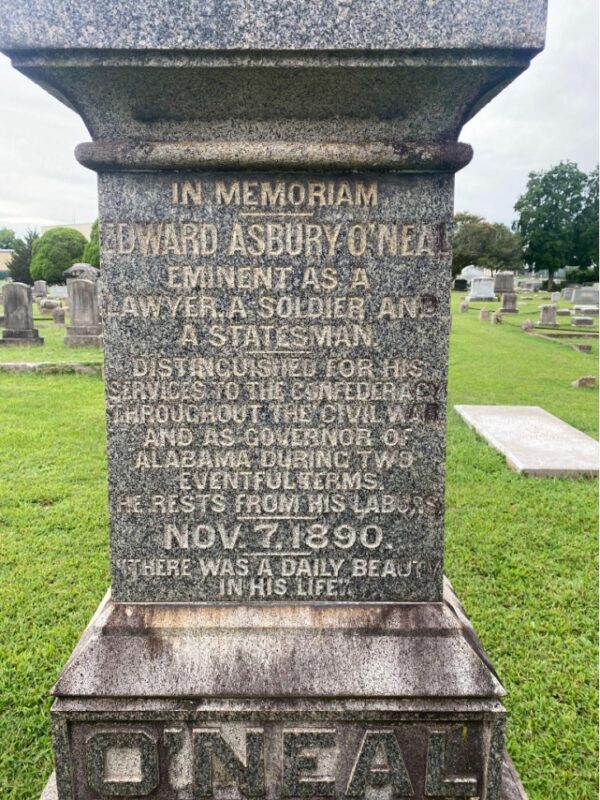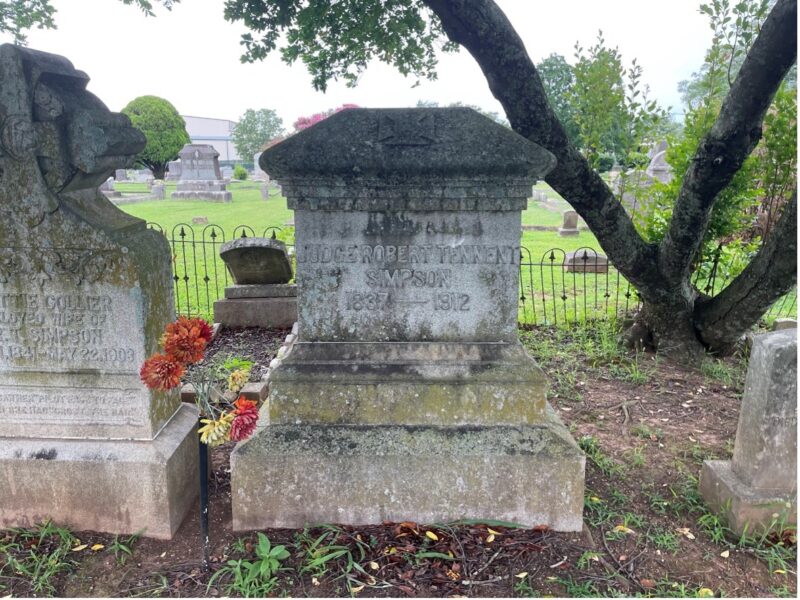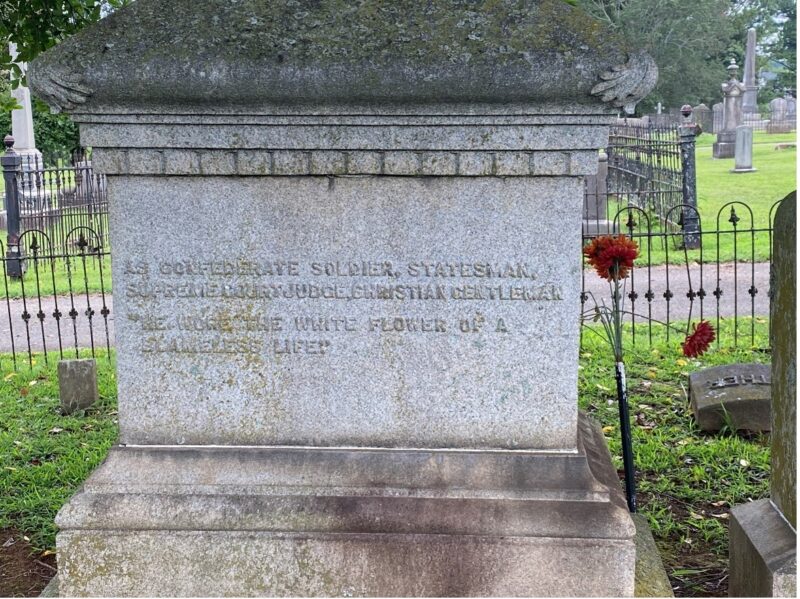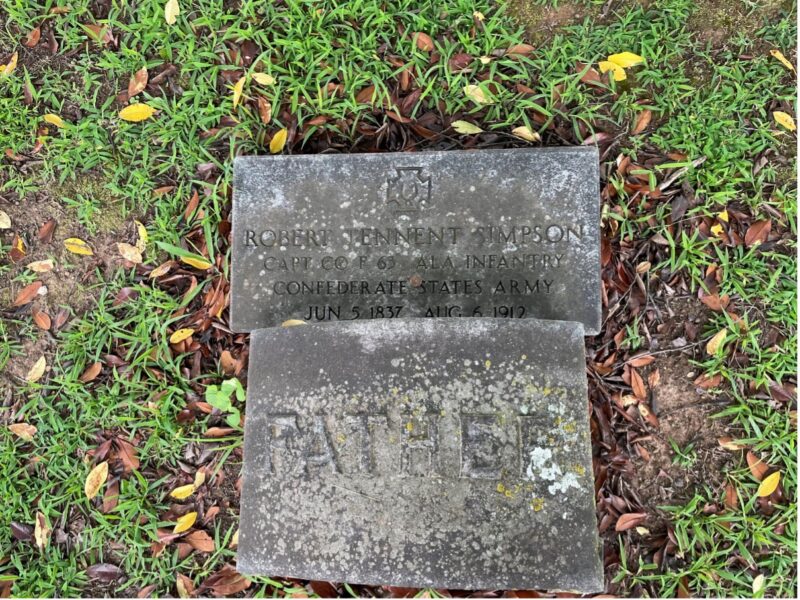The Southern Cross of Honor: how insurrections become legitimized
26 September 2023 – Katie Owens-Murphy and Brian Murphy
Editor’s Note: This post is part of a series of reflections from winners of NCPH awards in 2023. Katie Owens-Murphy and Brian Murphy are the recipients of the G. Wesley Johnson Award. This award is named in honor of the founding editor of The Public Historian. It recognizes the most outstanding article appearing in the NCPH journal during the previous volume year. Murphy and Owens-Murphy’s article, “Public History in the Age of Insurrection: Confronting White Rage in Red States” appeared in The Public Historian (2022) vol. 44, no 3.
The murder of George Floyd in 2020 sparked a renewed push to critically examine Confederate monuments located across the US South in prominent places such as courthouses, college campuses, and public parks. This blog post explores a lesser-known piece of Confederate iconography called the Southern Cross of Honor, a symbol that has often been strategically placed on grave markers for the Confederate dead. The US government’s gradual complicity in the establishment of these markers reveals how, and why, some insurrections become legitimized over time.
The Southern Cross of Honor emerged during the Civil War as the Congress of the Confederate States sought a counterbalance to the Medal of Honor awarded by the United States Army. Adopted by the Confederate Congress in October of 1862, it was meant to serve as an award of distinction for Confederate soldiers. The United Daughters of the Confederacy (UDC) reimagined the symbol’s design and purpose in 1898. The UDC added a laurel wreath, a symbol of triumph, to the center of a cross pattée, and inserted the Confederate motto “Deo Vindice 1861-1865”—”God will vindicate.” Similar Lost Cause rhetoric frames the 1899 resolution made by the Athens, Georgia, Chapter of the UDC to adopt the Southern Cross of Honor:
Whereas, It has been the custom of every civilized nation to bestow upon its members of the Army and Navy, and such others as peculiarly deserve it, medals and crosses of honor, such as the Victoria Cross of England, the Iron Cross of Germany, and the Cross of the Legion of Honor of France, and medals and crosses bestowed by the United States Government; and
Whereas, We, the Daughters of the Confederacy, recognizing the fact that the army and navy of the Confederate States have never had such decorations conferred upon them, consider it especially our duty and privilege to supply the deficiency . . . Resolved, That upon those who distinguished themselves by remarkable feats of courage, the cross [is] to be attached to a laurel leaf pin, to distinguish it as a special mark of valor.
Resolved, That it be made a feature of Memorial Day to confer these crosses. (Quoted in Belden, “War Medals of the Confederacy,” 1914, p. 201-202.)

Edward O’Neal’s gravestone in the Florence City Cemetery, 2023. Photo credit: Katie Owens-Murphy and Brian Murphy
The resolution constructs the Confederacy as a sovereign nation, comparing it to England, Germany, and even the United States itself. Yet the grievance politics of the UDC took hold amongst congressmen in the northern United States, and even with President William McKinley, who, by touring the South, worked toward what he believed to be “sectional reconciliation” following the Spanish-American War. In a speech he delivered in Atlanta in 1898, McKinley claimed that the time had arrived “in the evolution of sentiment and feeling under the providence of God, when in the spirit of fraternity, we should share with you in the care of the graves of the Confederate soldiers” (quoted in Gaines Foster, Ghosts of the Confederacy, 1987, p. 153).
Cemeteries became important sites through which the Confederacy’s insurrection was legitimized over time. The Confederate dead were gradually recognized by the U.S. government as war veterans rather than insurrectionists on grave markers. In 1906, Congress authorized the use of federal funds to subsidize marble markers commemorating the Confederate dead in national cemeteries. In 1929, the authorization was extended to Confederate graves in local cemeteries. A year later, the War Department authorized the inscription of the Southern Cross of Honor above the name, rank, company, and regiment of the soldier.
Yet white Southerners did not wait for federal funding or recognition to codify their narratives into public memory. Edward O’Neal, governor of Alabama, was buried in 1890 in the Florence City Cemetery with an inscription that places his “distinguished” service to the Confederate army on the same plane as his service as governor.

Front view of Robert Tennent Simpson’s original gravestone in the Florence City Cemetery, 2023. Front view. Note the Southern Cross of Honor along the top. Photo credit: Katie Owens-Murphy and Brian Murphy
Between 1908 and 1912, the Florence, Alabama, chapter of the UDC cataloged the Confederate soldiers who were buried in the city cemetery and raised money to erect simple headstones that read “C.S.A.” Following federal authorization, additional government-issued headstones featuring the Southern Cross of Honor were erected alongside the existing headstones. The result is a complicated and often redundant layering of celebrations of the Confederacy for the same burial plot, such as that of Judge Robert Tennent Simpson.
And in some cases—such as Simpson’s—the UDC overwrote family relationships (such as “father”) by re-emphasizing a Confederate identity. In the Florence City Cemetery, the Confederate dead were buried as veterans in the “Soldier’s Rest” section alongside those who fought on behalf of, rather than against, the US army. Most residents of Florence do not question their legitimacy.

Back of Robert Tennent Simpson’s original gravestone in the Florence City Cemetery. Photo credit: Katie Owens-Murphy and Brian Murphy
What can we learn from the Southern Cross of Honor in the moment of our own historical insurrection? First, we learn that insurrections can be normalized over time through performative rituals of grief. The UDC used cemeteries to proliferate a Lost Cause narrative that authorized additional monuments to insurrections in public spaces. Second, we learn that incremental legislation created a permission structure for the Lost Cause through the federal government’s recognition of and, ultimately, funding for these headstones and their Lost Cause rhetoric. Finally, we learn that this permission structure was made possible through reconciliation narratives favored by white politicians. President Biden’s 2022 remarks on the “Continued Battle for the Soul of the Nation,” which name and condemn extremism and authoritarianism, nevertheless contain notes of reconciliation: “. . . tonight I’m asking our nation to come together, unite behind the single purpose of defending our democracy regardless of your ideology.” This moment in history is a good time to reflect on the long-term cost of short-term reconciliation “regardless of ideology.” The refusal to delineate between citizens and insurrectionists may be much more long-lasting and more deeply rooted than we can possibly recognize.

Robert Tennent Simpson’s government-issued gravestone in the Florence City Cemetery, which also features the Southern Cross of Honor. Photo credit: Katie Owens-Murphy and Brian Murphy
~ Katie Owens-Murphy is associate professor of English and PI for the Restorative Justice Lab at the University of North Alabama. Brian Murphy is the Director of the Florence Arts and Museums. They live with their daughter in Florence, Alabama.



